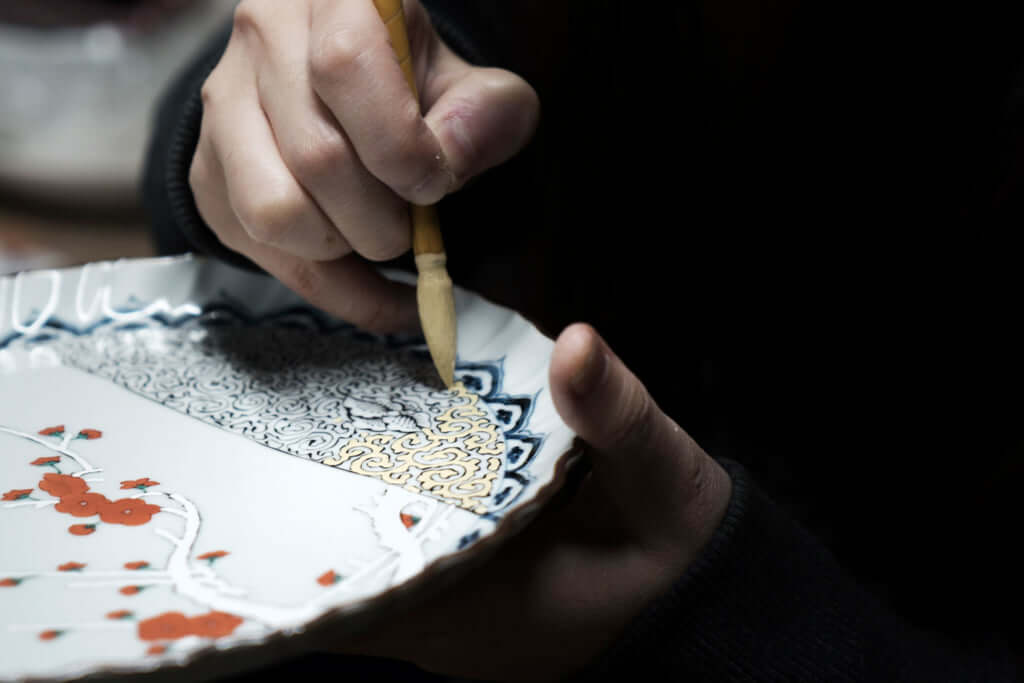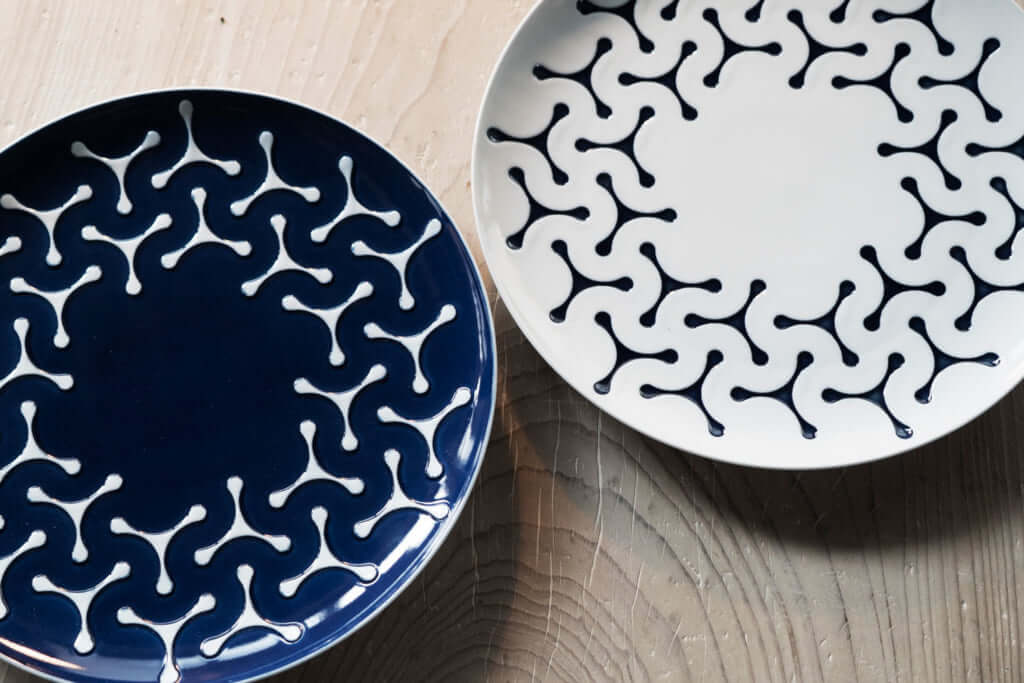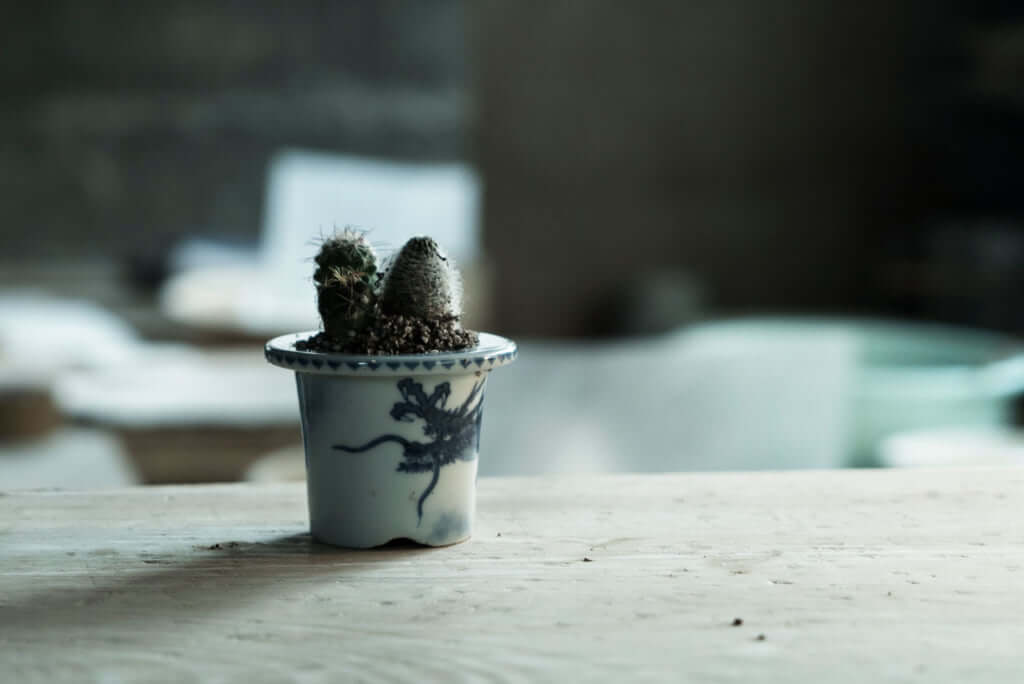The Ever-changing Arita-ware
Kyushu on the Table: Pairing Kyushu Specialties with French Cuisine #02
Saga Prefecture’s Arita is the birthplace of Japan’s porcelain tradition. It started in 1616 with Yi Sam-pyeong, a potter from Korea who’s still considered The God of Pottery. Japan’s unique aesthetic sense lended itself well to a rich ceramic culture, producing famous potteryware such as Imari-ware (or Arita-ware), which is renowned for its beauty and distinction around the world.

Craftsmen glaze following the strict standards that produce Riso Porcelain grade pottery. http://www.risogama.jp/about_riso_english.html
Riso Porcelain, Ltd. focuses on merging tradition with innovation. The company’s founder, Shinji Terauchi, acquired Yi Sam-pyoeng’s former home for Riso Porcelain. Terauchi is pioneering the future of Arita-ware with innovative designs. One example is a plate he collaborated with the Tokyo 2020 Olympic logo designer, Asao Tokoro. The piece brings Asao’s rich geometric designs together with Terauchi’s sublime craftsmanship. Whether one knows pottery or not, it’s hard not to appreciate this piece of art. With textured pieces such as this, colours have to be applied with care, then it has to be fired with equal care. The tension between the two artists’ work makes this a dignified piece that’s sophisticated enough for Japanese cuisine, and delicate enough for French.

The plate made in collaboration with the Tokyo 2020 Olympics logo designer, Asao Tokoro.
Reviewing the history of Japanese pottery, Terauchi expresses an interesting perspective, ‘Japan is a bowl culture. Since the Edo Period, bowls have had a place on the table as decorations holding potted plants. These were so small that they could fit in the palm of one’s hand. Therefore, they were used to garnish the table in much the same way a candle does’, says Terauchi. He has made several of these palm-sized pots using Arita-ware techniques. Terauchi feels strongly that innovation demands understanding and applying past traditions.

A palm-sized pot for house plants. A modern style that adds a decorative touch succulents.
TRENDING
-
A House from the Taisho Era Reveals Its Secrets
While visiting an abandoned building, Hamish Campbell discovered photographs the owner had taken of the place in the 1920s.

-
The Taboo-Breaking Erotica of Toshio Saeki
The master of the 1970s Japanese avant-garde reimagined his most iconic artworks for a limited box set with silkscreen artist Fumie Taniyama.

-
With Meisa Fujishiro, Tokyo's Nudes Stand Tall
In the series 'Sketches of Tokyo', the photographer revisits the genre by bringing it face to face with the capital's architecture.

-
Masahisa Fukase's Family Portraits
In his series ‘Family’, the photographer compiles surprising photos in which he questions death, the inescapable.

-
Hajime Sorayama's Futuristic Eroticism
The illustrator is the pioneer for a form of hyperrealism that combines sensuality and technology and depicts sexualised robots.





